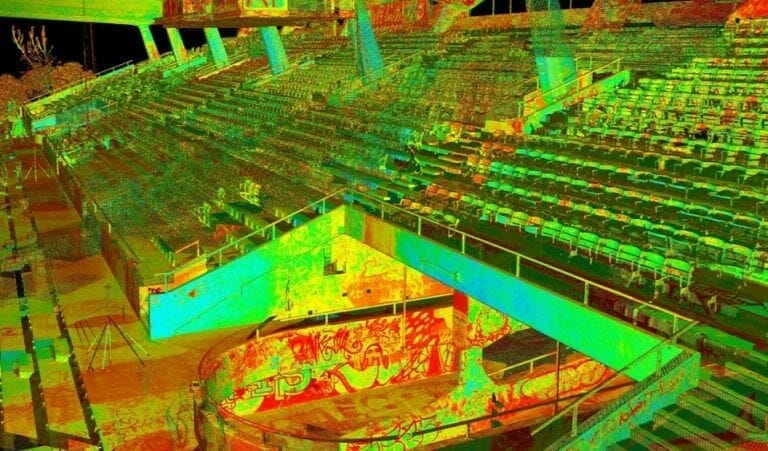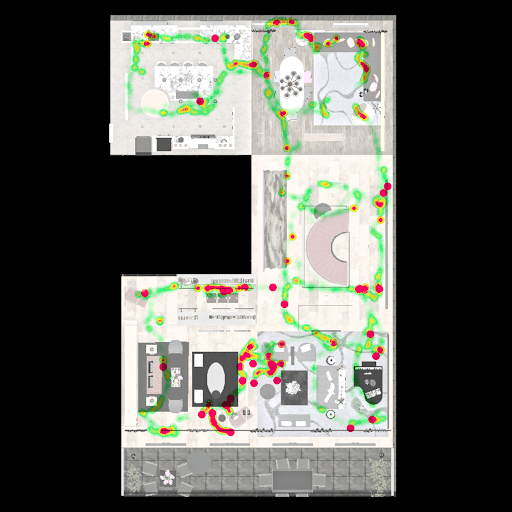
14 Technologies Disrupting the Construction Industry
The Construction Industry’s technology adoption continues to change rapidly. Today no industry seems to be introducing disruptive new technologies faster than construction. Whether as small as a boutique hotel or as large as an airport terminal, each of a project’s many facets lend themselves to new approaches through digital technology, data science, or other advances. If you’re not bringing as many of these as possible into your own operation, you may find yourself among the disrupted rather than the disruptors.

At VIATechnik, we have been advising our clients to chart their roadmaps and plans to implement disruptive technology – after all, our success is driven by our clients disrupting the industry and growing their businesses into market leading companies. Below, we share some of these technologies being implemented by our clients:
1. 360 Image Capture
Almost non-existent a decade ago, and a novelty just five years ago, 360 photo capture platforms for the AEC industry are moving past stationary laser scanners as the industry’s favorite choice. Three-fifths of AEC firms and service providers report using them. They provide uncanny detail quickly with the ability to map an entire site during a quick walkthrough. Furthermore, with tools such as OpenSpace automating the capture and timeline tagging, the process has never been easier.
2. Supply Chain Optimization tools
Purchasing, storing, and shipping materials is a big expense that historically has often been managed by seat-of-the-pants approaches. Today firms don’t interact with a single source but a global supply chain network. Understanding those network connections and using that information to make better purchasing decisions is the job of supply chain optimization software, and its use is expanding rapidly. We like what we see with what Track’em is doing in the heavy industry sector and can’t wait for more success stories here.
3. Automated Layout software
The layout of building components and systems is essential for any facility to meet design intent, whether in office buildings, hospitals. or factories. Automated Layout tools that link the model layout to the field takes the guesswork out of the process, from optimizing the speed that teams layout walls and hangers to providing a more precise construction process that follows Building Information Modeling (BIM) coordination.
4. Augmented Reality Verification
Augmented Reality allows users to supplement real-world images with contextual information, including overlaying visuals of the model on the current state of a project in various stages of construction. The benefits are many, including allowing on-site verifications based on inconsistencies between the plan and the current reality. In 2017 14% of firms used augmented reality tools, almost double the rate from a year earlier. While head mounted displays still have a lot of User Experience issues to resolve, a lot of job sites are now using IPADs to visually verify project progress.
5. 4D BIM
This software links three-dimensional components with information such as schedules, costs or safety data. 4D BIM has particular value in reducing the frequency of change orders, one of the biggest “unnecessary” costs in construction. One study found that 4D BIM use reduced change orders to less than 3% of project dollars, compared to over 11% for 3D BIM.

Learn what construction technology leaders say about 4D BIM
6. Digital Fabrication
These processes links data from BIM and CAD sources directly to manufacturing equipment to guide the fabrication process. The most widely known application lies in 3D printing, but its use is growing rapidly in construction, particularly in the fabrication of irregularly shaped objects or linking the BIM to CNC machine output.
7. Reality Capture
This process enables the creation of 3D models from existing building conditions using everything from laser scans to photographs. It can be used to model a site and test the ways the topography, climate, or other factors will affect the building’s structure or performance. Experts estimate that Reality Capture reduces costs by 50% over traditional 2D scanning, mostly in terms of time saved. At VIATechnik our firm has built existing conditions models of a range of facilities – from airports to stadiums, allowing design teams to understand integrations with new construction a lot better.

8. Operations Science
In the construction industry projects that are late, over budget, or both, are all too common. Operations Science aims to change that for the better, by studying production processes the way scientists study natural processes. The results can diagnose and identify solutions to inefficiencies, bottlenecks, and barriers, saving time and money.
9. Data Analytics
This software category brings together all the data generated by other technologies and uses it to support better decision-making. Mathematical models developed through data analytics can reveal unexpected insights about any aspect of a project – sometimes answering questions you didn’t know you had! One company estimated that data modeling resulted in insights that saved $11 million on a $60 million civic center project. At VIATechnik our firm regularly captures data on projects to assess process and tool improvement opportunities.

10. IoT (Internet of Things) Integration
This allows data to be automatically transmitted through networked computers, intelligent machines, and even wearable devices. Among many benefits, construction site safety is enhanced by wearable devices connected to the IoT, and use of these is expected to grow from 200 million in 2016 to 500 million in 2021.
11. Schedule Automation
This software can automatically generate optimized future schedules based on automated updates to project status in real time. In particular, developing Look Ahead Schedules in a project’s last phase have historically been both a great opportunity to allocate resources effectively and a challenge for busy project managers. Automating this process has the potential to improve outcomes while reducing costs. Check out ALICE for more information on schedule automation.
12. Material Science
This research is leading to improvements in concrete and other construction materials, with benefits including lower carbon footprints. For example, researchers have found that cyanobacteria added to the concrete mix will actually eat carbon dioxide, making the concrete stronger – and in the process eating into the industry’s CO2 emissions, which currently stand at 7% of the world’s total.
13. Modular Construction
This practice is expanding its scope, with new approaches such as multiple trades collaborating on a single unit, or even entire rooms produced at dedicated facilities. Besides the savings in time and cost, by moving more of the construction process offsite the customer experiences less disruption to his own business or other activities.
14. VR Collaboration
We’ve all become familiar with meetings in the digital space in recent months, but holding meetings in virtual reality offers a whole host of new and better benefits. A designer can walk team members through his or her virtual design from the inside, revealing nuances in ways no simple online meeting ever could. With features such as the ability to turn walls transparent, the experience creates a better understanding of the layout and how the design fits together. At Stanford University, the PBL Lab trains the next generation of leaders to collaborate in VR.
Interested in learning more about Disrupting the Construction industry and how your firm can lead in innovation? Our technology practice leaders have worked with leading owners and general contractors in transforming their construction delivery process into streamlined and efficient digital workflows. Reach out to our innovation team at construction-innovation@viatechnik.com



